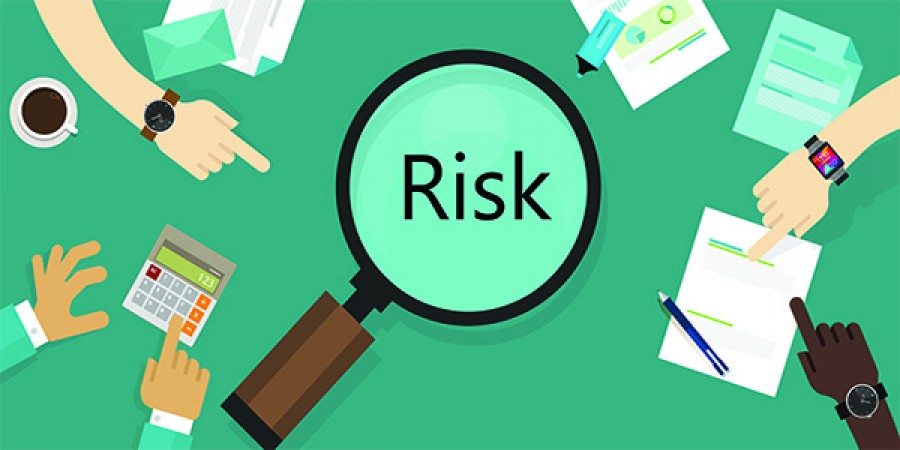A risk management policy statement is documentation of the risks involved in performing a specific action. Because any activity can have some risk involved, companies create a risk management policy statement as a way of defining those risks. It also informs the person performing that activity of the associated risks.
What is Risk Management Policy?
In its most basic form, a risk management policy is a document that is created by an organization’s key decision makers outlining the risks associated with specific activities. This can vary based on the organization, but could include areas such as environmental, health, safety and security.
The purpose of a risk management policy is to ensure that any risks are identified before any action is taken. It also establishes what the procedure is that needs to be followed to deal with the risk. This means that any decision maker can understand what might go wrong before proceeding. An effective risk management policy will lay out the entire process that needs to be followed and who is responsible for performing what actions.
What Should Be Included in a Risk Management Policy?
A risk management policy should include the following items so that it provides a thorough guide for handling all risks:
- Written statements of goals and values
- Statement of principles
- Policy to be followed
- Explanation of how existing laws apply to risk management
- Explanation of the steps in which policy is implemented
- Awareness of threats to both success and failure
What are the Benefits of a Policy?
The reason companies create a risk management policy to outline how risks are to be addressed with company is to increase safety and security, as well as increase the profitability of the company. Some of the ways that this policy statement works to achieve these goals include:
- Creating an overview of how the management staff plans to deal with risks
- Establishing a unified concept of risk management
- Enhancing awareness of risk management across the organization
- Reducing the number of potential risks
What are the Disadvantages of a Policy?
One of the biggest drawbacks of using a risk management policy statement is that the policy does not anticipate every possible risk. Even when all the decision makers have discussed and outlined every possible risk in detail, a risk management policy may still be imperfect. Also, changes in the organization cannot be implemented immediately so a risk management policy will have to be updated as conditions change.
Any changes made to a risk management policy should not be done without the approval of the organization’s key decision makers to avoid any conflicts that might escalate to litigation.
What Are the Potential Risks?
The word “policy” itself has a negative connotation for many, but it is important to understand the risks associated with a policy before making any judgements. For example, just because an organization has a drug use policy does not mean that employees will use drugs.
However, it is important to understand the potential risks that come from creating such a policy. For instance, employees who know there is a drug policy may assume that it is safe to use while on the job. This could lead to the person making a mistake that costs the company money or creates a public relations issue.
While the potential risks can be much worse, the same logic applies to a wide range of policies. Establishing a policy that solves for these risks can make a big difference for the company.
How Does a Company Establish a Risk Management Policy?
The board of directors and the CEO are responsible for establishing a policy that helps prevent problems and increase the safety of employees. This is often done as part of a strategic planning meeting. In this meeting, the management staff will brainstorm a list or risks associated with the company’s activities. This can be done by specifically brainstorming risks or by brainstorming ideas that are not likely to have a specific risk associated with them. The staff will then combine various ideas into a master list of risks.
This list is typically reviewed by the members of the firm’s legal team to ensure that nothing is missing. The members of the legal team will then determine whether any laws that may be violated by the policy. If any risks are found, then the assembly of risks is sent to an outside attorney to make sure that the risk management policy statement is as risk-free as possible.
The assembly of risks is commonly reviewed by members of the management staff to ensure there are no issues. This is not done to eliminate the risks, but rather to make sure the risks are predicted.
The entire list of risks and threats will be put into a document that is agreed upon by all of the management groups. This is then finalized and made into a policy statement. This can be used as a blueprint for any potential risk that comes up in the future.
Why do you need a Risk Management Policy?
Just like any other business practice, having a risk management policy is an important aspect of doing business. As a result, it should always be up-to-date and filed with the business documents of any company. You may need to hold the policy up to the public to prove that the company is acting responsibly.
A good record of an efficient risk management policy will help the company determine the amount of liability insurance it should carry. Because liability insurance protects against all of the business’s responsibilities in comparison to the business assets, the company will need to have a good understanding of the risks.
A risk management policy is also important for the employees to see as well. Not only does it show how the company is protecting the company, it can help employees feel safer in their job. A responsible organization that has a good risk management policy in place shows that it values the safety of its employees and has a good plan for protecting all of its assets.
The Bottom Line
Any organization can benefit from implementing a risk management policy. In addition to helping the organization identify risks and deal with them, it can also be a useful legal tool for protecting the company and all those who work for it. For companies that handle large amounts of finances or that deal with the general public, it is better to have a good risk management policy in place than be sorry later.











